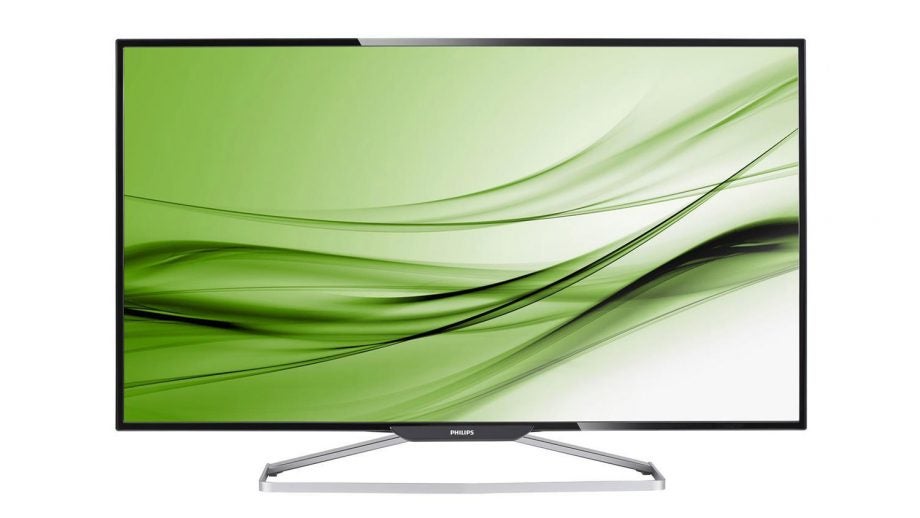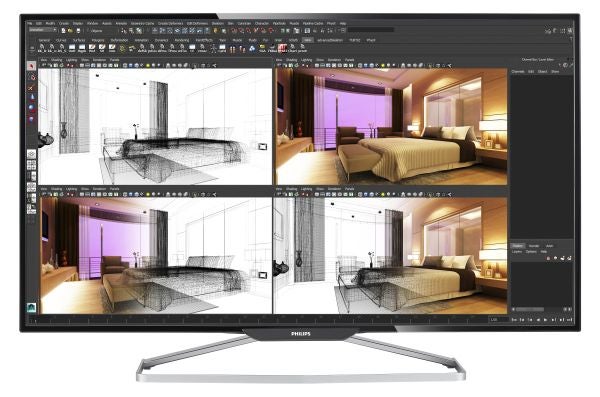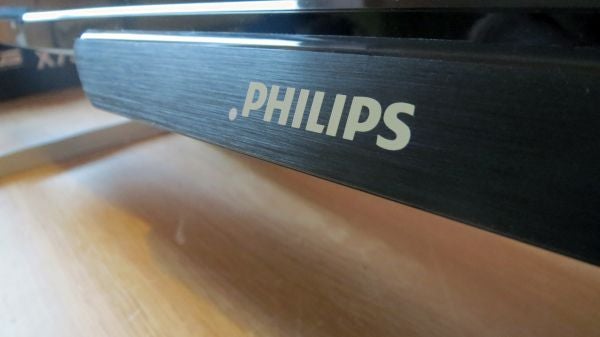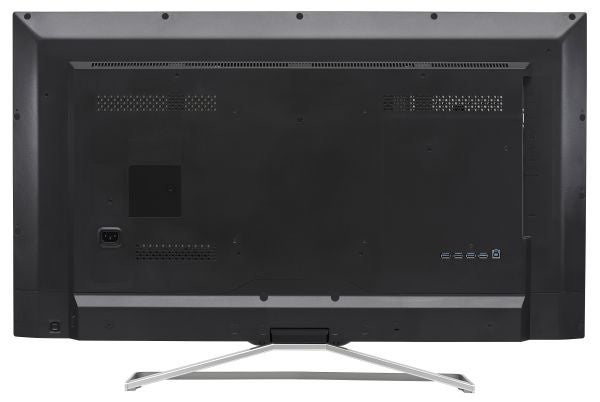Philips Brilliance BDM4065UC Review - Image Quality, Lag and Verdict Review
Image Quality, Lag and Verdict
Is this 40-inch 4K monster your next monitor?

Sections
- Page 1 Philips Brilliance BDM4065UC Review
- Page 2 Image Quality, Lag and Verdict Review
Philips Brilliance BDM4065UC – Image Quality
The Brilliance kicked off with decent performance straight out of the box. Its brightness level of 258 nits is a tad lower than many of its rivals, but it’s beefed up by a brilliant black level of 0.05 nits – that’s lower than every other screen we’ve tested in this category, and it contributes to a stonking contrast ratio of 5160:1.
That figure means that dark tones are incredibly deep, and that black level means that colours have plenty of punch elsewhere too. The stunning contrast also ensures good depth and variation throughout the entire range, with subtle shades detectable even in the lightest tones.
The factory Delta E of 2.65 is reasonable, but it’s unable to match some rivals. The Asus impressed with a colour accuracy level of 1.95, while the Philips fell behind with 3.35. The colour temperature of 7372K didn’t impress, either – that’s too cold, and poorer than the Asus and Samsung screens.
The situation improved with Samsung’s SmartControl software was loaded. The app’s calibration tool is simple to use, and it gave the screen a big boost: its Delta E jumped to 1.22 with a maximum of 2.98, and brightness improved to 264 nits – which meant contrast rose to 5280:1. It’s a much better bill of health, even if the colour temperature remained at an unimpressive 7324K.
The Philips’ calibrated contrast and colour accuracy results beat the Asus and cheaper Samsung’s performance – only the expensive Samsung UD970 proved superior.
Viewing angles are good, too – a boon when the screen’s size means you’ll spend plenty of time looking at its extremities from off-centre angles. Positional changes from above and below saw the screen darken a tad, and the situation was better when the Brilliance was viewed from the sides – colours lost a little punch, but didn’t dim.

Philips Brilliance BDM4065UC – Screen Modes
The Brilliance comes with a host of screen modes designed for different scenarios. One of the key options, Smart Uniformity, proved underwhelming in tests, with a brightness level of 185 nits and a middling Delta E of 2.83. Its colour temperature jumped up to 7841K, which made test images look too cool.
We saw similar results with the sRGB mode. This option is handy for designers who need the sRGB gamut to be reproduced accurately, but its Delta E of 2.11 is nothing to shout about and it’s locked at 100% brightness, which is just too bright for most users. The Smart Contrast mode is better – most of its results mimic the sRGB and Smart Uniformity options, but the Delta E improved to an average of 1.
Elsewhere, the Philips’ screen modes are a mixed bag. Good balance comes from Office mode, which drops the brightness to a manageable 186 nits and the black level to a deep 0.03 nits. Delta E improves to 1.02, while colour temperature remains up at 7,322K. The Photo mode performed similarly, albeit with the brightness ramped back up to 252 nits – better to pick out detail in pictures.
The Movie and Game modes are both worth avoiding. The former option has a middling Delta E of 2.25 but it’s ruined by the cool colour temperature of 8603K, and the latter is even worse – its colour temperature of 10,272K lends games a clinical, cool finish that we don’t like.
The final mode is designed to save power. The Eco Mode drops the brightness to just 73 nits, which helped the Philips’ power consumption drop from a standard 73W to 38W.
Many of these results are a mixed bag, and colour temperature remained too cool across all of these options, but we’re generally impressed with the BDM4065UC’s screen modes – most improve the Delta E to superb levels.

Philips Brilliance BDM4065UC – Uniformity and Input Lag
The size of the BDM4065UC’s panel means it’s tricky for Philips to maintain consistency across the entire screen.
This is most evident when analysing the backlight’s brightness levels. The screen gained a few percentage points of brightness across its middle, with a maximum gain of 4% on the right-hand side of the panel – but this didn’t continue to the top of the screen, where the left- and right-hand corners dropped 7% and 13% respectively. It’s a similar story at the bottom, where the left and right corners lost 10% and 7% of their brightness.
The drop in brightness can be seen outside of our test procedure, too. When working with light colours – such as web pages or Word documents – the screen’s darkening could be seen in the extremes of each corner.
Colour temperature uniformity was better. We saw a maximum rise in colour temperature of 4% across the top of the screen, a maximum drop of just 2% across the middle, and a reduction of 4% along the bottom.
The Philips’ average input lag of 22.4ms is perfectly fine for movies, work and for most games too. This isn’t a screen designed for gaming, but the vast majority of titles will be fine – only pro gamers need look elsewhere.
Should I Buy the Philips Brilliance BDM4065UC?
The BDM4065UC exhibits excellent picture quality. Its factory settings trade blows with similarly priced competitors, and when calibrated it’s even better thanks to excellent contrast, brightness, black levels and colour accuracy. Its screen modes are a mixed bag, but some of them are worth considering – they improve colour accuracy even further.
There are only a couple of issues when it comes to screen quality. The colour temperature is consistently too cool, and brightness uniformity strays more than we’d like.
The Philips has better quality than many rivals at this price, and the expensive Samsung UD970 isn’t that far ahead.
This screen’s main limitations are physical. Its huge size means it’ll overwhelm every desk, and it’s a double-edged sword even with the sensible ppi – you won’t have to squint or do much upscaling, but you still may end up moving your head and torso around to see into the corners. The lack of adjustment options hampers its versatility, too.
The screen quality on offer means this screen is capable of handling movies, work applications and games with similar aplomb, but its size and lack of versatility mean it needs careful consideration. A screen like the Asus PB287Q has good quality levels in a smaller, more versatile exterior – and costs less, too.
SEE ALSO: Best Wi-Fi Extenders Round-up
Verdict
This screen offers exceptional image quality, especially when calibrated, and several of its screen modes work well. Its huge size is impressive and makes the screen more manageable than denser, smaller 4K panels, but the 40-inch diagonal works against it, too – it dominates desks, and there are no adjustment options. Consider whether you really need a 40-inch monitor before taking the plunge.
Trusted Score
Score in detail
-
Image Quality 9
-
Design 7
-
Value 8
-
Features 7


